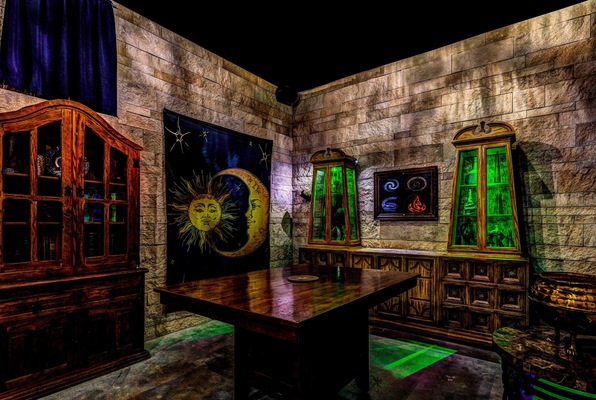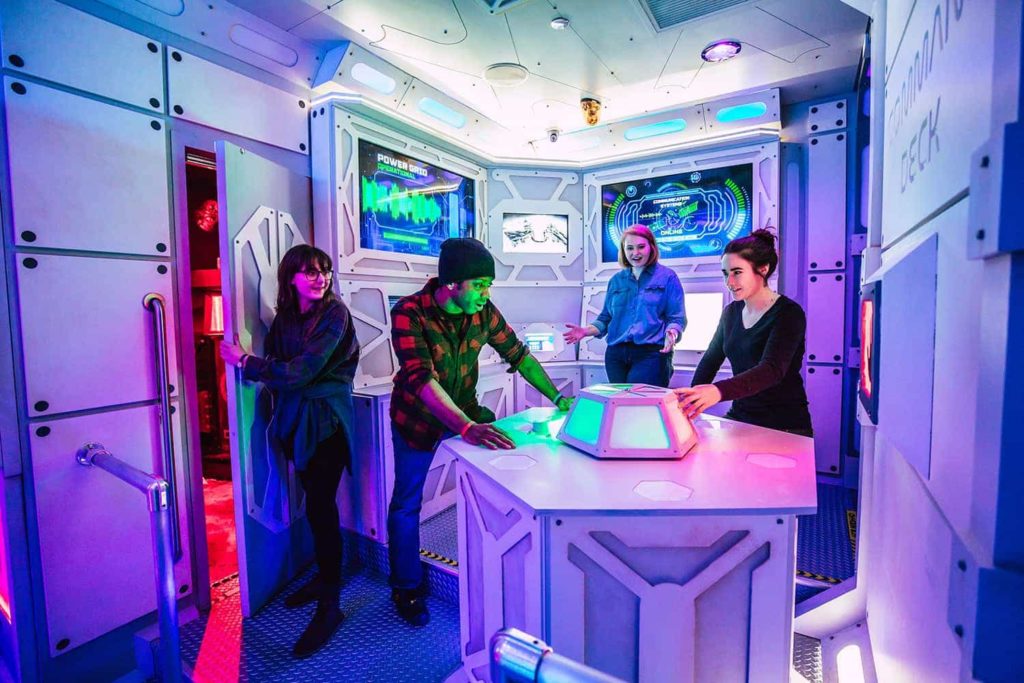Escape Room Austin: A Must-Visit Destination for Team Building and Fun
Escape Room Austin: A Must-Visit Destination for Team Building and Fun
Blog Article
Why a Getaway Area Is the Perfect Activity for Structure Stronger Relationships at the office
Escape spaces provide an one-of-a-kind setup for boosting workplace connections by cultivating interaction, collaboration, and depend on among team participants. What details elements of a getaway area make it so reliable for group structure?
Improves Team Interaction
Integrating retreat areas right into team-building activities can considerably enhance group interaction by supplying an immersive and vibrant setting where staff members must team up to solve complicated challenges. The high-pressure, adrenaline-driven setting of a getaway area requires employee to communicate plainly and efficiently, commonly under limited time restrictions. This need for precise communication aids break down obstacles and encourages open dialogue, as participants have to share info, monitorings, and ideas quickly to progress.

Furthermore, the instant responses loop within escape rooms-- where every action has a straight consequence-- enhances the significance of reliable and clear communication. Teams discover to improve their communication techniques in actual time, boosting their capability to share vital details succinctly. These abilities, focused the context of an escape space, are directly transferable to daily work scenarios, boosting general team performance and communication.
Fosters Cooperation
Cooperation is the foundation of any kind of effective group, and getaway areas supply an one-of-a-kind system to grow this vital ability. Within the high-stakes environment of a getaway space, staff member are called for to work carefully with each other to address a series of intricate challenges and difficulties. This immersive circumstance needs that people merge their varied abilities, knowledge, and perspectives to accomplish a common purpose.
Unlike traditional team-building workouts, retreat areas supply instant comments on partnership efforts. As participants progress with the area, they can see the straight effect of their collective efforts, strengthening the worth of interacting. The time-sensitive nature of retreat spaces additionally requires efficient interaction and control, as any type of gap in synergy can cause failure.
Moreover, the varied series of jobs in an escape space makes certain that every employee has a chance to contribute meaningfully, highlighting the relevance of inclusivity in collaborative initiatives. By demanding real-time analytic and decision-making, retreat areas develop a microcosm of the collaborative dynamics needed in the workplace. This experiential discovering setting cultivates stronger interdepartmental connections, enhancing overall organizational communication and effectiveness.
Builds Trust and Confidence
Structure on the collaborative structure developed in a getaway area, these tasks also play a considerable duty in cultivating count on and confidence amongst employee. In the high-pressure atmosphere of a getaway room, employees need to depend on each other's skills and judgment to solve puzzles and accomplish their usual goal. This dependence grows a feeling of depend on, as employee witness firsthand the capacities and dependability of their coworkers.
Moreover, successfully browsing the challenges within an escape space boosts collective and individual confidence. Facing and overcoming intricate problems in a constrained timeframe enhances a group's idea in their collective analytical capabilities. Each participant acquires confidence from their contributions being recognized and valued, which can translate to better efficiency and partnership back in the office.
Additionally, the necessity for clear communication and shared support in a retreat space circumstance highlights the significance of each team member's function. This direct exposure to interdependency helps to damage down barriers and foster a much more trusting and cohesive team dynamic - best escape room austin. Essentially, getaway rooms serve as a microcosm for office difficulties, providing a controlled environment where count on and confidence can be developed and enhanced
Motivates Imaginative Problem-Solving
Retreat areas, with their complex problems and varied challenges, inherently urge innovative analytic amongst individuals. These immersive situations need workers to think outside the box, commonly using unconventional approaches to analyze codes, unlock hidden compartments, and eventually escape. This environment presses group participants to take advantage of their individual abilities and you could try here perspectives, fostering a society of technology and partnership.
In the high-pressure setting of a retreat room, standard analytic methods might not be enough, prompting participants to embrace experimental strategies and brand-new techniques. This change from regular analytical reasoning to innovative ideation can be exceptionally beneficial in an office context. It allows employees to break without regular patterns and discover novel remedies to complicated problems.
Additionally, the time-sensitive nature of getaway areas grows fast reasoning and flexibility, abilities that are transferable to real-world specialist circumstances. As associates brainstorm and synergize to overcome obstacles, they learn to worth diverse inputs and value the diverse techniques each employee offers the table. This collective effort not just boosts analytical abilities but additionally enhances interpersonal relationships, as workers witness firsthand the power of collective creativity in accomplishing common objectives.
Participating in an escape room provides workers with a special common experience that goes beyond the common workday interactions. This immersive task calls for collaboration under time restrictions and high-pressure situations, cultivating a sense of unity and shared reliance among staff member. Unlike regular workplace tasks, getaway spaces obstacle individuals to believe and act collectively, consequently creating memorable experiences that strengthen interpersonal bonds.

Furthermore, the one-of-a-kind setup of a getaway room breaks the uniformity of day-to-day work life, offering a fresh context in which Continue workers can communicate. This modification of views can disclose new facets of associates' characters and capability, promoting a much deeper understanding and recognition of each other. Ultimately, the common experiences acquired from a getaway space not only advertise stronger relationships however additionally add to an extra efficient and harmonious job atmosphere.
Conclusion
To conclude, retreat rooms serve as an extraordinary tool for boosting workplace connections by promoting group communication, cultivating cooperation, building count on and self-confidence, and motivating innovative analytical. The immersive atmosphere and shared obstacles produce lasting memories and expose new aspects go to my blog of associates' individualities. These experiences add to an extra harmonious and effective work environment, inevitably enhancing the bonds among employee and improving overall organizational cohesion.
Escape spaces offer a special setup for improving office relationships by promoting interaction, cooperation, and trust amongst team members. Within the high-stakes setting of a retreat room, team participants are required to function carefully with each other to solve a series of intricate challenges and obstacles.Furthermore, the diverse variety of jobs in a getaway room makes sure that every team member has a chance to contribute meaningfully, highlighting the value of inclusivity in joint initiatives.Structure on the joint foundation established in a getaway space, these activities likewise play a considerable role in promoting count on and confidence among group participants.In addition, the requirement for clear communication and common assistance in a retreat area scenario highlights the relevance of each team member's role.
Report this page